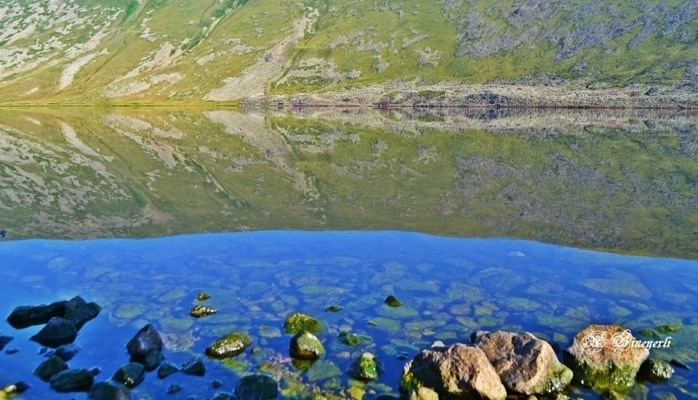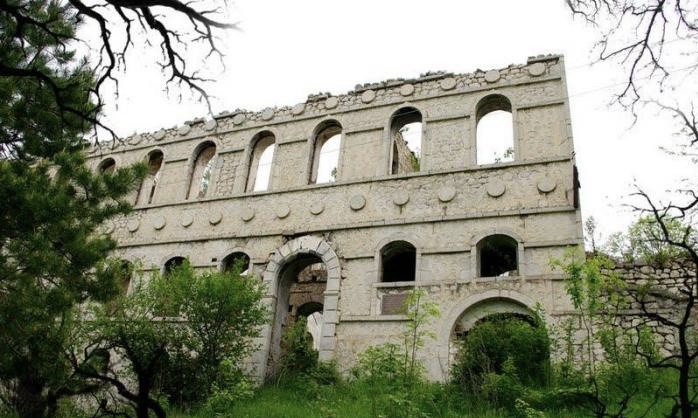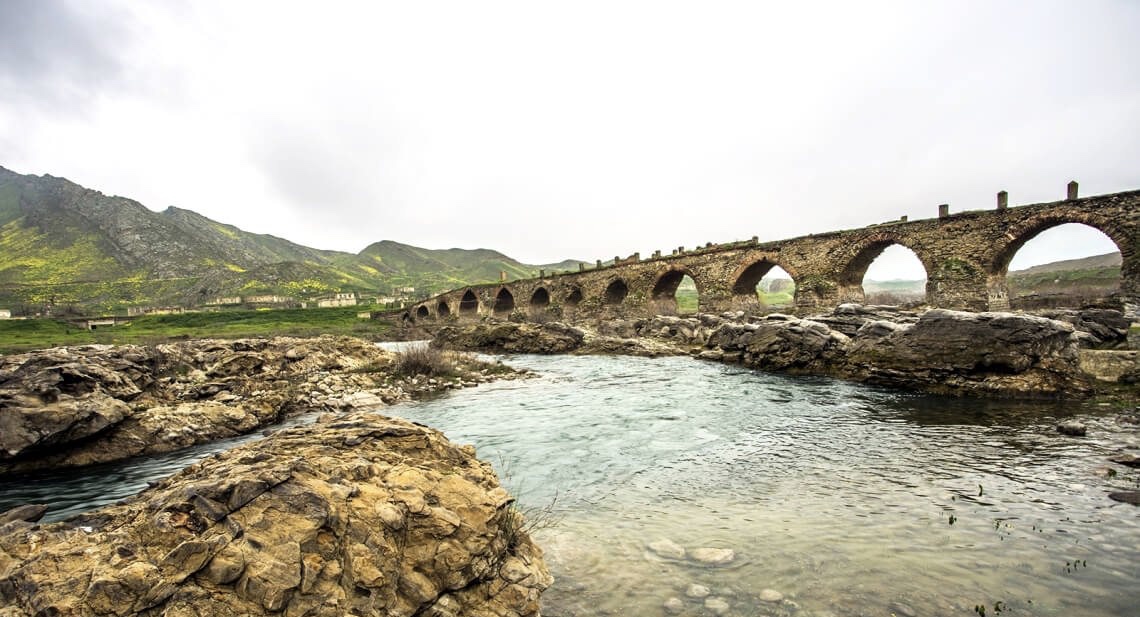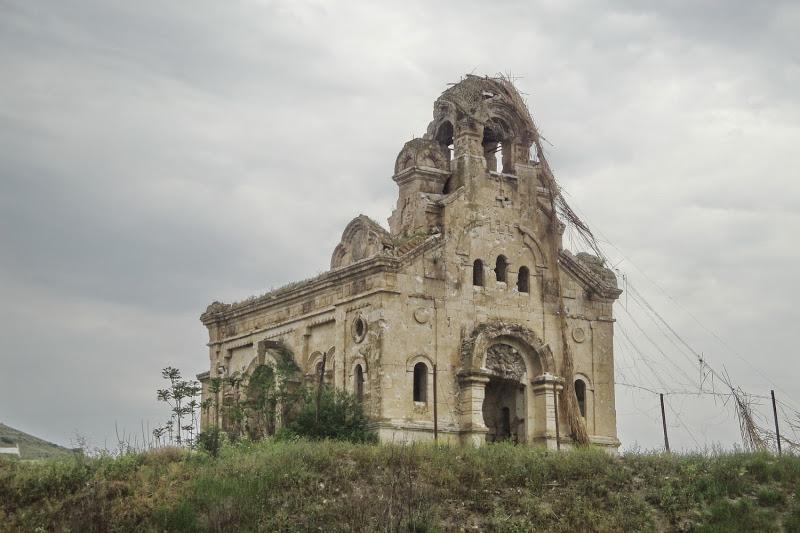






of







of







of





















As one of the magnificent historical monuments of Azerbaijan, Garakopektepe is located on the right bank of Kondelenchay, at the entrance into Fuzuli city. The monument is a truncated cone shaped high hill. The height of the hill is 50 meters, the diameter from the North to the South is 220 m, from the West to the East is 180 m. Garakopektepe was formerly mentioned in scientific literature as a sepulchral monument, a type of burial mound or barrow. The excavations of the Garakopektepe settlement started in the late nineteenth century. Thus, Emil Resler, the German archaeologists, came her for the investigation of the settlement. Later on, the Russian archaeologist A.A. Ivanovsky, a prominent member of the Moscow Archaeological Society Garakopektepe, made an excavation in the settlement. “But the firm kept its secrets Garakopektepe thick layers of earth, this outstanding scientist had even confused. Since then, the scientific literature for a long time ruled the wrong idea about the monument, and it was considered mound”.[1] However, during the thorough archaeological excavations carried out in 1960-1980s, it became clear that this monument was an ancient settlement. The cultural layers identified here confirm that this settlement existed in the area over several millennia.
The oldest stage of Garakopektepe coincides with the Mesolithic Age. Flint and microlitic obsidian artifacts discovered in the territory of the monument are clear evidence of settling this area over the same period. It is believed that in that time the Mesolithic Age hunters inhabited this hill. The next layer cropping out on the surface of Garakopektepe is dated to the period of fully developed sedentary farming. This period coincides with the 6th-5th millennium BC. This stage is characterized by small adobe constructions for everyday household needs, very simple agricultural tools and primitive clay utensils. In this cultural layer, there were revealed stone, bone and horn adzes and sickles as well as utensils typical for that period. In the period of the Early Bronze Age and the early bronze culture spreading over the territory of Azerbaijan, i.e. in the 4th-3rd millennium BC, round and rectangular dwelling and household premises typical for this period were built on the slope and at the foot of this archaeological monument. These constructions affirm that at that time Garakopektepe was an inhabited place and craft center. Among the ancient handcrafts developed here are metalwork, pottery, weaving and others.[2]
It is interesting that the thickness of the cultural layer dated to this period is 7 m. This is evidence for the existence of very intensive life activities in the territory of the monument. In the course of archaeological excavations, there were discovered high-quality glossed ceramics, examples of small plastic art, and various ritual fireplaces. Very rare and valuable finds were revealed in the above-mentioned layer of the Garakopektepe monument. Among them are spearheads made of meteorite stone, a clay mould for the bronze axe and ceramics richly decorated with symbolic ornaments. During the archaeological excavations carried out in the territory of the monument, artifacts dated to other stages of the Bronze Age were found. Excavations carried out in the upper layer of this period resulted in finding the ruins of a magnificent wall dated to the Middle Bronze Age. Various ceramic ware, decorations and other artifacts discovered in this layer cover the same period. The obtained materials demonstrate convincingly the development of the cultural interactions and trade connections between the local population and Southwest Asia.[3]
Also, it is necessary to note that a large burial site belonged to the ancient people who inhabited this area was discovered in the territory not far from Garakopektepe. Interesting discoveries covering Bronze and Early Iron Ages were obtained during the archaeological excavations carried out in this territory. The cultural and economic development of Garakopektepe also proceeded during the next ages. Thus, a very important watchtower that had been erected on the Great Silk Road existed here in the Early Middle Age. The territory was entirely covered with stone buildings. Archaeological artifacts excavated here give grounds to advance the idea that in the Middle Age Garakopektepe was a significant trade and craft settlement that played an important role in the life of the region.[4]
[1] Aslanov, E.M., “To the Question on research of Garakopektepe Archaelogical Monument”, International Scientific Journal Theoretical & Applied Science, Vol. 44, Issue 12, 2016, p. 76.
[2] Ministry of Culture and Tourism of the Republic of Azerbaijan, Garabakh: The Eternal Memory of Azerbaijan Heritage, (2008), pp. 247-249. See also: Azərbaycan tarixi (7 volumes), Vol. 1, (Çıraq, 2007), p. 719. See also: Azərbaycan arxeologiyası (6 volumes), Vol. 6, (Şərq-Qərb, 2008), p. 632.
[3] Ministry of Culture and Tourism of the Republic of Azerbaijan, Garabakh: The Eternal Memory of Azerbaijan Heritage, pp. 247-249. See also: Aslanov, “To the Question on research of Garakopektepe Archaelogical Monument”, p. 77.
[4] Ministry of Culture and Tourism of the Republic of Azerbaijan, Garabakh: The Eternal Memory of Azerbaijan Heritage, pp. 247-249.

Qaragol Interrepublics State Reserve was set up with the decision of the Council of Ministers dated November17, 1987. Garagol State …

The idea of establishing Aghdam Bread Museum, which is considered to be the second in the world after the Zurich …

The Khurshudbanu Natavan’s House is a historical and architectural monument of the 18th century located in the city of Shusha. …

Museum Mausoleum Complex of Molla Panah Vagif is located in Shusha, Azerbaijan. It was built in honor of Molla Panah …

The Bridge belongs to the Arran architecture school. The first written source that mentioned the 15-arched Khudafarin Bridge belongs to …

Garghabazar Caravanserai was built in 1681 at the hillside, in the center of Garghabazar village of Fuzuli district, 8 km …

Armenia’s vandalism in Nagorno-Karabakh and seven surrounding regions affected not only the historical, cultural, and religious heritage of Islam but …

Jabrayil History-Ethnography Museum has been operating since 1953. Archaeological and ethnographic materials belonging to the history of the region, textiles, …

Khudavang, or Dedeveng, Monastery Complex is located in the Vang village of Kalbajar District, on the left bank of Tartar …

“The 19th century Aghdam Juma Mosque is perhaps the only structure that has withstood the years of neglect since the …